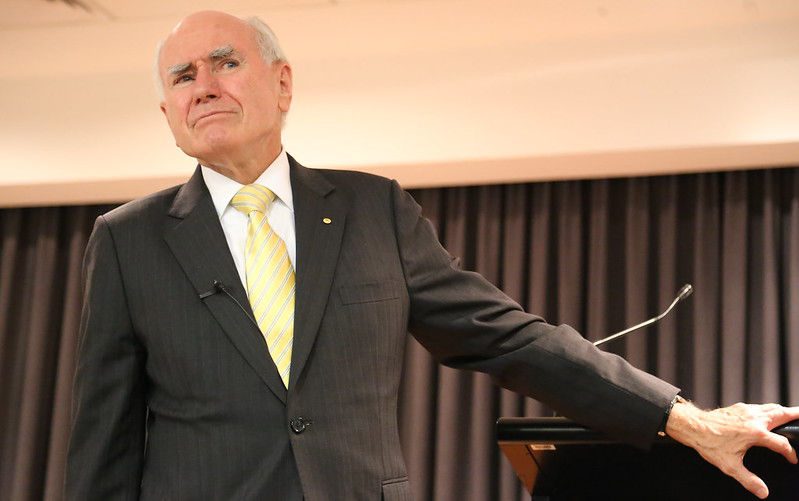The Liberal Party a broad church or a house divided?
December 23, 2022
The results of the ANUs 2022 Australian Election Study confirm that the Coalition was undone by the pandemic, the economy, and a highly unpopular Prime Minister. However, they also suggest that the Liberal Partys broad church is an increasingly untenable edifice.
Since its inception, the party has straddled two distinct, and not infrequently incompatible, ideologies liberalism and conservatism. That can have the advantage of aggregating voters with liberal views and voters with conservative views, but only if the liberal voters are not turned off by conservative policies, and vice versa.
The broad church reached its apotheosis under John Howard. He managed the unavoidable ideological tensions through a combination of high personal popularity and deft political skills. His mix of soft economic liberalism and traditional socio-cultural conservatism was a winning formula in four elections.
But once Howard departed the scene, the partys ideological differences came to the fore. Theres been intraparty conflict and ideological mixed messaging ever since.
The problem has been exacerbated by the rise to prominence of a raft of environmental and socio-cultural issues like climate change, same sex marriage, indigenous recognition, and gender equality issues on which liberals and conservatives frequently dont see eye to eye. Thats led to the adoption of policies that appeal to some members of the Liberal Party base but not to others. Or worse, policies so unacceptable to some members of the base that they can no longer vote for the party.
The conservative chickens came home to roost in the 2022 election. Significant numbers of former and potential Liberal voters rejected the party because of its conservative stance on a range of non-economic issues.
There were warning signs well before 2022.
In the 2017 plebiscite, over 75% of voters in longstanding Liberal Party seats like Goldstein, Wentworth, Warringah, and Higgins supported same sex marriage. It was apparent that many Liberal Party voters were economic liberals but held progressive views in other areas.
This should have sent a clear message to the Liberal Party leadership that many in the party base were increasingly exercised about environmental and socio-cultural issues and increasingly intolerant of conservative views on those issues.
The warning signs were ignored, and the Liberal Party paid the price in 2022. Not surprisingly, voter gender and age played a major role in the outcome.
The AES 2022 data shows that the average position of women on the left-right political spectrum is well to the left of the average position of men. The gender gap in left-right placement is the largest ever recorded by the AES. Women were more concerned about health and the environment than men.
That partly explains why just 32% of women gave their primary vote to the Coalition compared to 38% of men. Many were dissatisfied with the Liberal Partys positions on environmental and socio-cultural issues, including climate change and gender equality.
Most ominous for the Liberal Party is the demographic shift. According to AES 2022, only one in four voters under 40 voted for the Coalition. Younger generations are engaged with post-material issues and their views on those issues are predominantly progressive. AES 2022 states that through processes of generational replacement, the electorate is moving to the left and becoming more progressive in a range of policy areas.
The recent AFR/Freshwater Strategy poll on the Voice backs this up. It reveals that 85% of 1834-year respondents support the Voice, while 58% of those over 55 oppose it.
More and more younger voters are reluctant to compromise on their values and beliefs and are intolerant of opposing views.
All this spells trouble for a broad church seeking to attract both liberals and conservatives. Some voters who support economic liberalism find themselves unable to vote for a party whose policies on environmental and socio-cultural issues are anathema to them.
This contributed to the Liberal Partys downfall in the teal seats. Liberal and conservative policies on the same election platform created an incompatibility of values that rendered that platform unacceptable to some former and potential Liberal Party voters. And the loss of those voters, combined with tactical voting by many Labor and Greens supporters, was enough to see the seats turn teal.
In an opinion piece in The Australian, Dave Sharma, the former Liberal Party MP for Wentworth argues that high income, well educated younger voters in the teal seats should be fertile ground for the Liberal Party and our values. But the values he identifies are liberal values. He ignores the other half of his partys broad church its conservative values as evidenced by its track record on issues like climate change, asylum seekers, and gender equality.
This week the Liberal Party will consider a report on the 2022 election. Its expected that the report will recommend major structural changes including a target of 50% female candidates at the next election.
Doubtless such steps are required. However, they wont address the growing ideological challenges at the heart of the Liberal Partys broad church. They wont solve the incompatible values problem that alienates too many women and young voters.
And unless that problem is solved, the Liberal Party may struggle to win back the seats it needs to regain power.

